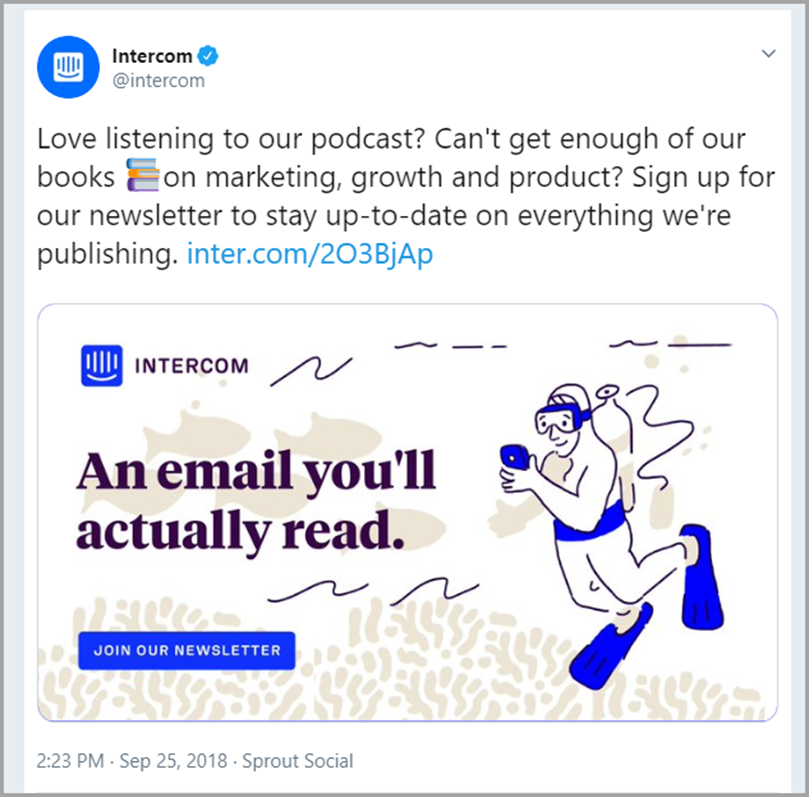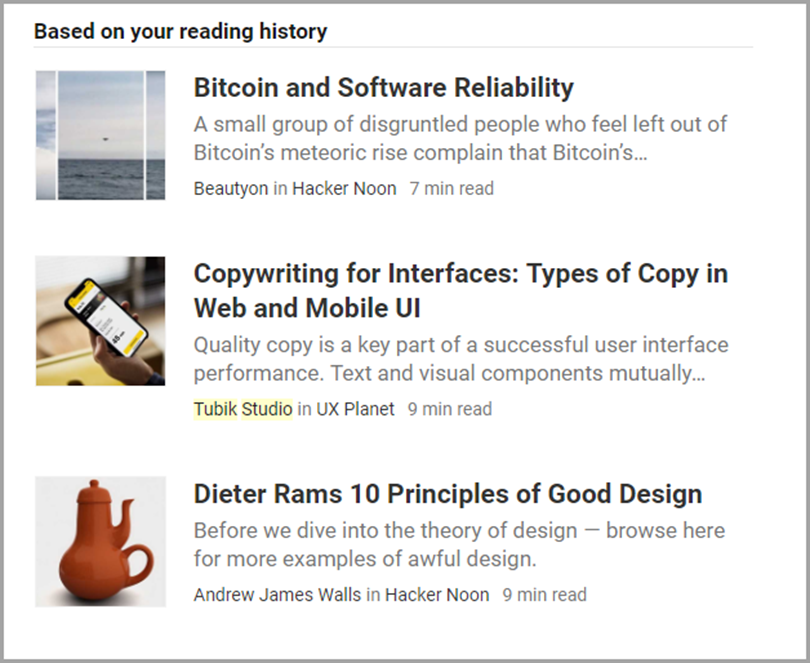
Social media marketing is great for reaching new people. Email marketing is awesome at making them convert.
If you see an opportunity here, you’re correct.
Customers need to encounter a brand up to 12 times before making a purchasing decision. Companies that integrate email with social media marketing can achieve that milestone sooner.
In the process, they build customer loyalty, drive engagement and generate brand recognition. Pretty cool, huh?
What’s best, it’s simple to make them work in tandem in a cost-effective way. Here are some tips to get you started.
Tip #1: Combine email and social media to build a stronger brand
Potential customers seek brand integrity. It implies that the company is trustworthy and pays attention to detail.
So what happens when two marketing teams don’t talk to each other? Email and social media start speaking very different languages.
Your brand consistency suffers. The emails you send are fun and informal. But the Facebook page is all serious business.
The whole branding becomes a bit weaker – and you lose potential customers as a result.
But syncing up the language of your emails and social media marketing isn’t hard. It comes down to communication between teams. And if you do it right, this approach helps you build more effective branding.

Product Hunt is a great example of this tactic. Their email newsletter and tweets share the same language. The brand is informal and enthusiastic, it features tons of emojis and can’t help but post another cat GIF.
Fans of Product Hunt will understand what the brand stands for no matter if they use Twitter, email or both. The brand is consistent.
Tip #2: Use your email list to make informed decisions on social media ads
Ads on social media can be a powerful way to convert potential customers. But they don’t come cheap. Wouldn’t it be nice to know which call-to-action will achieve more conversions?
Use your email marketing to test ideas for ads before you buy them. For example, write several emails based on effective subject lines techniques. See which one performs best – and use it in ads for social media.
You can go even further and A/B test various subject lines and images based on the customer group you want to target.
Tip #3: Recycle content
It’s pretty easy to recycle content between email and social media marketing channels. Once again, it all comes down to having a system in place, i.e. teams communicating with each other.
The obvious advantage here is the opportunity to share assets between teams. It’s a great and cheap strategy.
For example, look at the productivity app Notion. As a rule, they use a lot of GIFs on their Twitter page to showcase new features before they release.
But when the update is out, the team repackages the same GIFs in an email update:

That’s a pretty basic use case. Of course, you can take it to the next level.
For example, ask your Twitter/Facebook followers to share their success stories. Pick the most impressive posts and use them in the next email update.
This tactic kills two birds with one stone. You have the content for your next email and you will tell subscribers about your social media pages.
Here’s another idea. Use a Twitter thread (or a Facebook post) to explain something to users. When it’s time to write another email, link to that explanation instead of writing a new one. Once again, this will also nudge subscribers to your email list to follow you on social media.
A good example of this tactic also comes from Notion. In an email update, they announce a new feature with a quick description. But on Twitter, they publish a longer thread with the in-depth explanation – and link to it in the email.

The tweetstorm consists of a dozen tweets with custom images. By design, it also features replies of your customers. Manage to gain positive feedback and email subscribers will immediately see social proof:

The tactic works in the other direction, too. Tell an in-depth story in an email update and recycle it for Twitter or Facebook.
Content exchange helps marketers keep the pipeline full and improves brand consistency.
Tip #4: Add links to your social media pages in your email updates
This one’s pretty obvious. Don’t forget to put links to relevant social media pages in your email updates! This will make subscribing to your profiles a one-click decision.
Imagine that a customer subscribes to your email list. If they like it, they might be interested to check out your social media pages. But if you don’t have the links available, most people won’t bother finding them on their own.
Having links in your email remedies this. For example, compare these two emails.
Airtable sends email updates without a hint of the existence of their (pretty popular) social media accounts. Once their subscribers read an email, they don’t have an incentive to connect:

TunnelBear’s email looks similar. But they put links to Twitter and Facebook in the footer. The decision to check them out is pretty easy to make. Guess to which account I’m subscribed?

Featuring links to social media updates isn’t the only reason why TunnelBear’s Twitter page has 191K followers (compared to the 14K followers of Airtable). But it certainly reflects a more cohesive overall approach to marketing.
Tip #5: Schedule new posts on social media that will remind people about your email list
It’s useful to remind followers of your social media pages about your email list as well.
For starters, you can schedule posts with a link to your email list landing page. Explain what the user will be getting out of it and why your email list is cool.
Intercom, for example, likes to add custom images to their tweets:

On Instagram, it’s more than worth it to put a link into your bio. You can also run Stories promoting your email list. This way users will be able to visit your landing page with a simple swipe up.
And in some cases, it’s better to take advantage of built-in tools for such kind of promotions (like Facebook’s call-to-action buttons).
Product Hunt is a great example of promoting a business email list in a very simple way. They publish each edition of their newsletter online and then share it on social media:

Their followers are able to check out what kind of content they are going to see in an email before subscribing. If they do want to subscribe, the sign-up field is right there.
Notice that the published newsletter prominently features share buttons for Twitter and Facebook. This, once again, blurs the lines between email and social media marketing.
Tip #6: Run contests
Contests are a pretty cool way to engage your social media followers. Of course, you can do that in a way that helps grow your email list, too.
First, come up with a call-to-action and a prize. And then? Ask people who want to participate to sign up for your newsletter!

Boom – now a chunk of your social media audience is also subscribed to your email list.
A similar idea would be to tap into people’s FOMO. Promote an incoming email update which will feature exclusive deals and discounts. Or mention in the next email that you’re doing a contest on Twitter.
Tip #7: Take advantage of social media email digests
Here’s a pretty clever idea on how to find a way into a customer’s email inbox without making them sign up (which comes from DFWSEM).
Basically, pick popular groups on LinkedIn and start participating. Many people subscribe to email updates for groups they follow. If you manage to publish great content – boom, a potential customer sees an update in their email.
The trick here is to produce great content, of course. But you should be able to do it pretty painlessly by recycling blog posts.

For example, I haven’t encountered Tubik Studio before. But I subscribe to the Medium Weekly Digest. Tubik’s marketers were pretty active in the UX Planet group, so one of the digests featured their article.
Tip #8: Use social media to make ideal customers subscribe
If you want to get specific people to sign up for your email list, social media (LinkedIn in particular) can help.
For example, plug your ideal customer profile into LinkedIn Sales Navigator. The tool will instantly generate a list of hundreds of people uniquely fit to be your customers.
After that, you can target your resources to getting in touch with them and making them sign up. You’ll probably want to have some kind of an incentive, like an ebook they’ll get after subscribing. Pay attention to research, come up with a personalized message, and you’ll grow your email list with the most engaged customers.
Tip #9: Upload your email list to social media
You can also import people who already subscribe to your email list to social media.
Upload the list of your email subscribers to Twitter (Tailored Audiences), Facebook (Custom Audiences) or LinkedIn (Matched Audiences). This way you’ll easily be able to target your ads better based on whether customers have encountered your brand before or not.
Wrapping up
Today, there are more ways to promote your business online than ever before. But the variety comes at a price.
Businesses try their hand at several marketing channels at once… Only to forget to integrate them with each other. As a result, their marketing strategy suffers.
Think about making your email and social media marketing work together. It’s the equation as old as life itself: the whole is bigger than the sum of its parts.
Guest author: Steven is the Head of Content at LeadGibbon, a one-click tool for sales teams to find email addresses and other data for their leads. When he’s not busy with research for his latest article, Steve is binge-watching 80s horror movies or playing pick-up basketball with friends.
The post 9 Powerful Ways To Combine Social Media and Email Marketing appeared first on Jeffbullas’s Blog.
Read Full Article: http://bathseoexpert.tumblr.com/post/182190913506
No comments:
Post a Comment